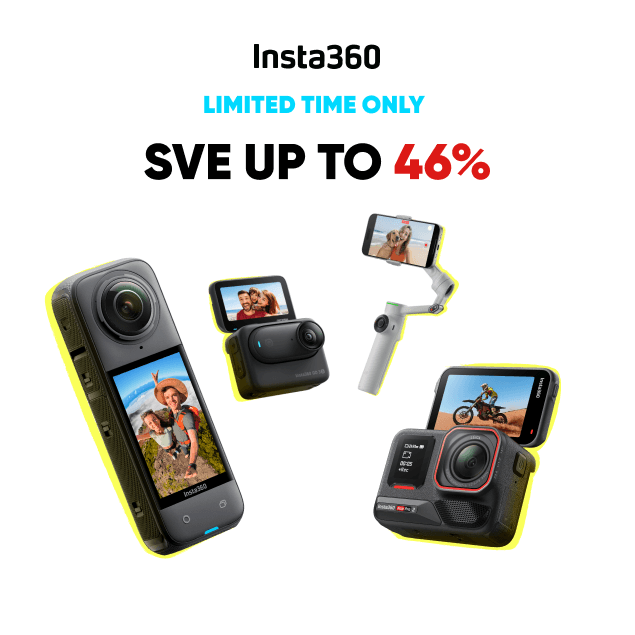From the early days when GoPro dominated the market with an 80% share to the rapid rise of Insta360 and DJI, the “three-way battle” in the action camera industry has been ongoing for more than a decade. In terms of both sales data and brand recognition, the three most popular action cameras on the market today are the Ace Pro 2 from Insta360, the HERO 13 from GoPro, and the Osmo Action 5 Pro from DJI.
When purchasing an action camera, many people also pay special attention to the latest flagship models from these three brands.
This review will take an in-depth look at the most popular 2025 flagship models from the three leading action camera brands: GoPro HERO 13, Insta360 Ace Pro 2, and DJI Osmo Action 5 Pro. We’ll compare these three cameras across multiple aspects, such as image quality and field of view (FOV), to help you clearly understand the strengths and differences of each model so you can choose the action camera that best fits your needs.
Camera Review - GoPro HERO 13 vs Insta360 Ace Pro 2 vs DJI Osmo Action 5 Pro
In terms of various parameters, GoPro's latest sports camera HERO13, once the king of sports cameras, does not show any significant advantage over Insta360 Ace Pro 2 and DJI Osmo Action 5.
The Ace Pro 2 supports 8K quality shooting with a 157° angle of view, while the Osmo Action 5 Pro offers a waterproof depth of 20 meters and a long battery life of 240 minutes.
For【image quality】, the Ace Pro 2 is the top choice, while those prioritizing【battery life】should consider the Osmo Action 5 Pro. However, GoPro HERO13 still maintains advantages in certain usage details and extreme sports scenarios.
| HERO 13 | Ace Pro 2 | Osmo Action 5 Pro | |
|---|---|---|---|
 |  |  | |
| Release Price | USD $329.99 HKD $3,200 | USD $399.99 HKD $3,149 | USD $349 HKD $2,899 |
| Sensor size | 1/1.9 | 1/1.3 | 1/1.3 |
| aperture | F2.5 | F2.6 | F2.8 |
| Lens | / | LEICA Lens | / |
| ISO | 100~6400 | 100~6400 | 100~6400 |
| Maximum Video Resolution | 5.3K@ 60fps 4K@120fps | 8K@ 30fps 4K@120fps | 4K@120fps |
| Slow motion | 4K@ 120fps | 4K@ 120fps | 4K@ 120fps |
| Burst Slo-Mo | 13 times (15 seconds) | / | / |
| Field of View (FOV) | 156° | 157° | 155° |
| Photo Resolution | 27.13 million pixels | 50 Million Paintings | 40 million pixels |
| Night View Function | / | PureVideo PureVideo Plus | SuperNight |
| Waterproofing | 10m | 12m | 20m |
| Screen | both sides of the coin | Flip Screen | both sides of the coin |
| Mounting Bracket | 1/4″ Screw-in Bracket | support sth.Quick Release Mount | support sth.Quick Release Mount |
| Temperature | -10°C ~ 35°C | -20℃~45℃ | -20℃~45℃ |
| Battery Capacity | 1900mAh | 1800mAh | 1950mAh |
| Storage Capacity | Supports 1TB SD memory card | Supports 1TB SD memory card | Built-in 64GB capacity Supports 1TB SD memory card |
| Duration | 79 mins | 180 mins | 240 minutes. |
| Weights | 154g | 177.2g | 146g |
Insta360 Ace Pro 2
In November 2023, Insta360 released the all-new Ace Pro action camera, a model that redefined performance by overcoming the traditional weakness of poor low-light video quality. This was followed by the launch of the Ace Pro 2 in October 2024. In conclusion, there is currently no action camera on the market that can match the Insta360 Ace series in both overall usability and image quality.

My impression of the Ace Pro 2 is that the more you use it, the more you appreciate its ease of use. It’s not just about the image quality—it’s also the quick-release base, flip screen, responsive and smooth touchscreen, and the convenience of the Insta360 mobile app.
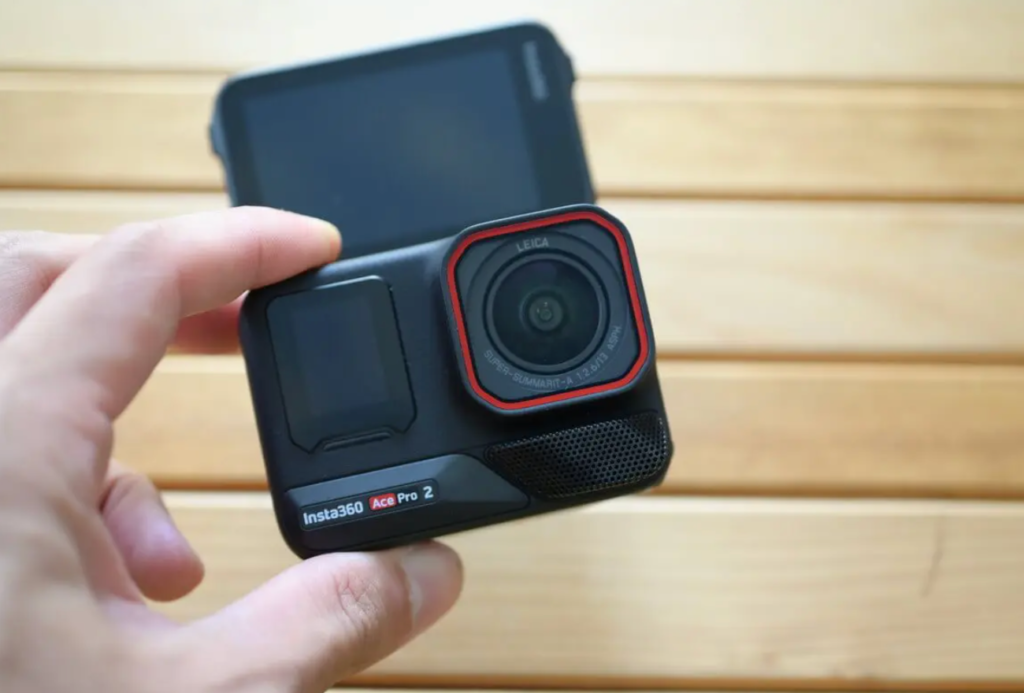
Below is a comparison of Ace Pro and Ace Pro 2.

Use this link to get a freebie, while stocks last.
GoPro HERO 13

GoPro released the HERO 12 in September 2023 and the HERO 13 in September 2024. The HERO series is GoPro’s flagship line, updated annually, and GoPro remains the original pioneer of the action camera market.
GoPro founder Nick Woodman is a surfing enthusiast, and even with the HERO series now up to the HERO 13, its focus on the core concept of extreme sports has never changed. The brand has always stayed true to its philosophy that “extreme is everyday.”

To be honest, GoPro cameras can feel a bit difficult to get used to. This is mainly because GoPro action cameras place a strong emphasis on stability—the screw-based mounting system and less responsive touchscreen make them harder for the average user to pick up and use quickly.
However, compared with DJI and Insta360, GoPro’s advantages in areas such as image quality, battery life, waterproofing, heat management, accessory mounting, and touchscreen responsiveness have all been gradually diminishing.
That said, GoPro’s popularity is still largely driven by its marketing strategy of partnering with athletes, which has built strong brand influence. In this article, I’ll focus on comparing the image quality and shooting perspectives of DJI, Insta360, and GoPro action cameras. In conclusion, when it comes to extreme sports recording, GoPro cameras still hold unique advantages.
DJI Osmo Action 5 Pro
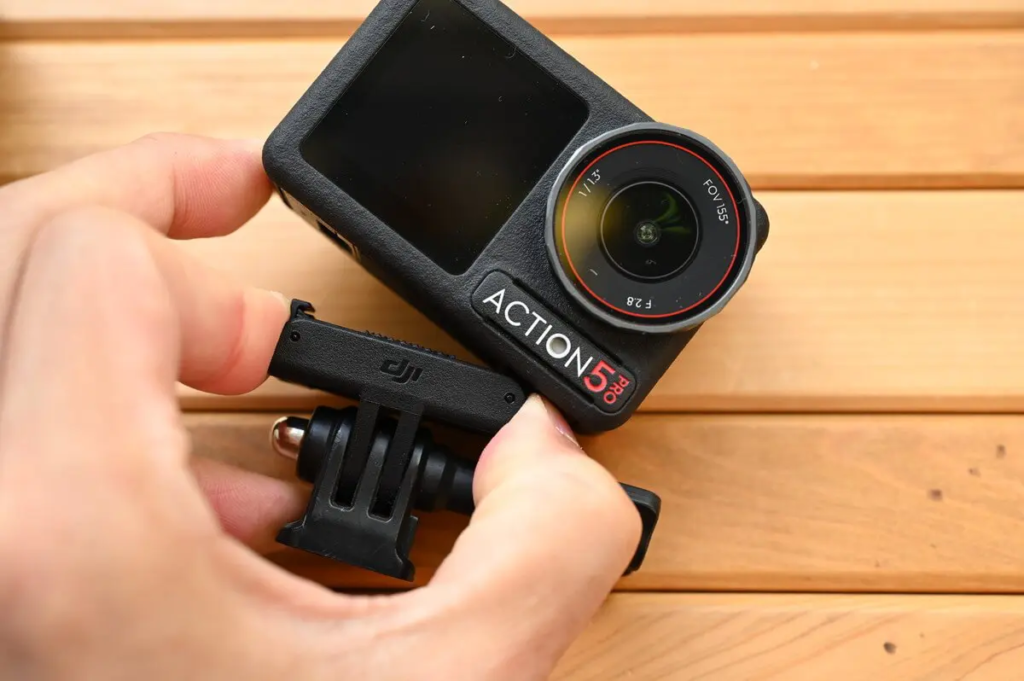
In September 2024, DJI released its latest action camera, the DJI Osmo Action 5 Pro. Weighing just 146g, it’s equipped with an industry-leading 1950mAh high-capacity battery that delivers an impressive 4 hours of runtime. It also supports 20-meter waterproofing without the need for a case
It can be said that if you buy a sports cameraWith only two key points, "waterproof" and "endurance", DJI Osmo Action 5 Pro is already the best choice in the market.But this sports camera8K recording not yet supportedThe image quality is different from GoPro HERO 13 and Insta360 Ace Pro 2.The
Imagine Quality Comparison
| HERO 13 | Ace Pro 2 | Osmo Action 5 Pro | |
|---|---|---|---|
| Image Quality |
When I was choosing a sports camera.Image QualityIt is the most important factor to consider. After using these three cameras, the ranking in my personal mind is:Ace Pro 2 > HERO 13 > Osmo Action 5 Pro.
When comparing image quality, whether it's 5.3K or 8K, the final image quality presented on YouTube or other platforms is often compressed to 4K. Therefore, I use 4K quality as the main standard for comparison.
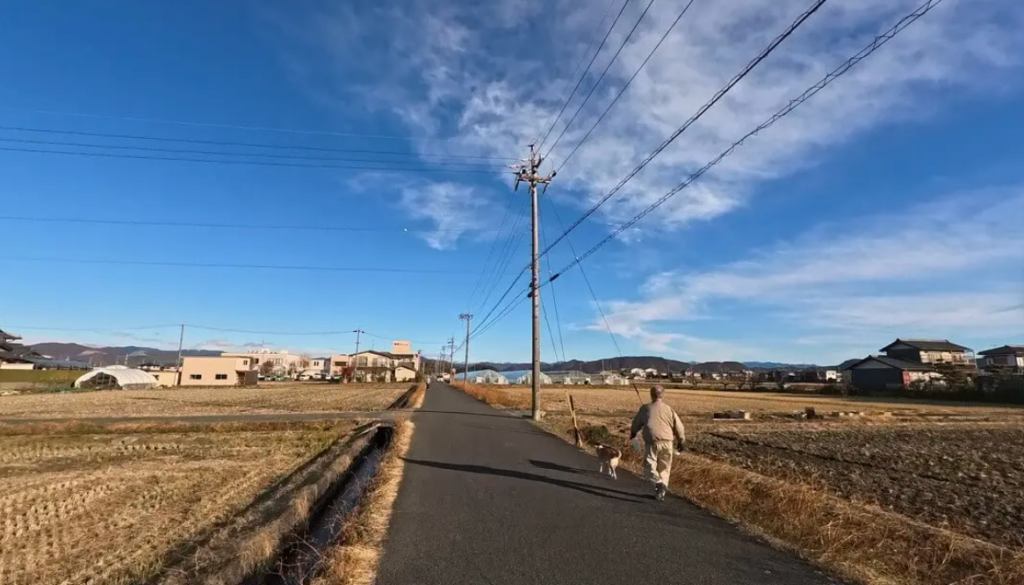
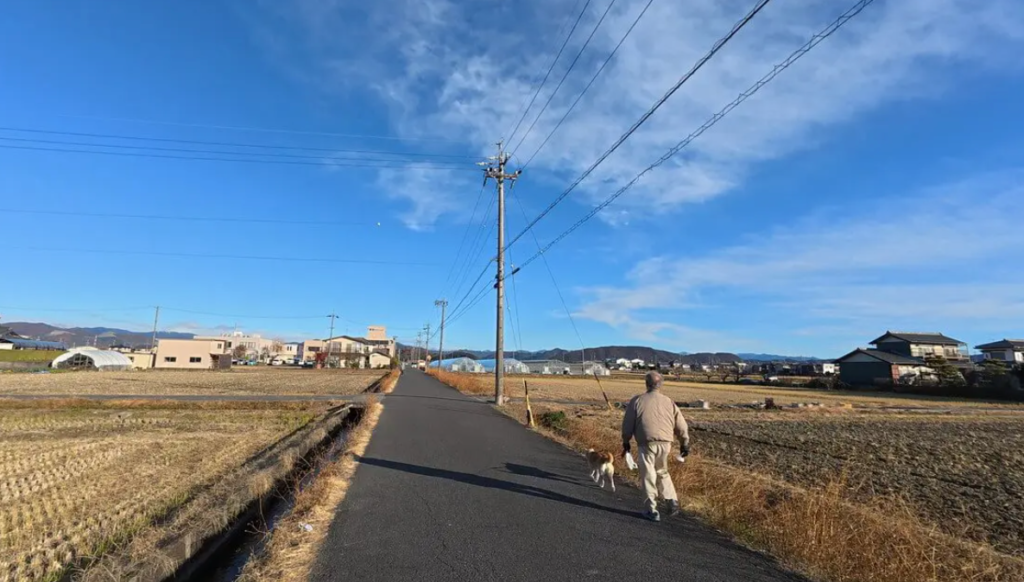
When comparing the Insta360 Ace Pro 2 side by side with the DJI Osmo Action 5 Pro, it is evident that the Ace Pro 2 provides more depth in image quality. For example, when looking at the details of clouds, the colors on the Ace Pro 2 appear more natural, whereas the Osmo Action 5 Pro tends towards a bluish tint. Meanwhile, the image quality of the GoPro HERO 13 seems more ordinary.

skyline
| HERO 13 | Ace Pro 2 | Osmo Action 5 Pro | |
|---|---|---|---|
| Image Quality |
The Pure Video mode on the Ace Pro 2 and the SuperNight mode on the Osmo Action 5 Pro are excellent for night filming. Personally, I find that the Osmo Action 5 Pro captures colors at night more closely to natural hues. Below is a comparison review video for your reference:
Camera Angle FOV Comparison
| Ace Pro 2 | Ace Pro | HERO 13 | Osmo Action 5 Pro | |
|---|---|---|---|---|
| FOV | 157° | 151° | 156° | 155° |
The Ace Pro's field of view (FOV) seems to be narrower compared to the GoPro HERO 13 and the DJI Osmo Action 5 Pro. As a new generation product, the Ace Pro 2's field of view has been upgraded to 157°. In comparison, the Osmo Action 5 Pro has a field of view of 155°, which is also quite wide.
In terms of specifications, the Ace Pro 2 appears to have the widest single-lens field of view among mainstream action cameras. However, to be honest, all mainstream action cameras on the market feature wide-angle capabilities, and it's difficult to notice the differences without a detailed comparison.

Additionally, GoPro and DJI offer interchangeable wide-angle lenses separately. By using these replaceable wide-angle lenses, you can capture even wider shots.
| Ace Pro 2 | HERO 13 | Osmo Action 5 Pro | |
|---|---|---|---|
| FOV | Irreplaceable | 177° | 182° |
Stabilization
Regarding image stabilization, most users (mysself included) likely won't notice significant differences, so all three cameras perform comparably in this aspect.
Horizon Leveling Feature
| Ace Pro 2 | HERO 13 | Osmo Action 5 Pro | |
|---|---|---|---|
| Horizon Leveling Feature | 4K30fps | 5.3K30fps | 4K60fps |
The horizon leveling function keeps the camera stable even when rotated 360 degrees. GoPro HERO 13 achieves 4K60fps horizon leveling, which is also GoPro action cameras' biggest advantage over DJI and Insta360.
The Insta360 Ace Pro had a relatively narrow field of view compared to other mainstream action cameras, but this issue has been significantly improved in the Ace Pro 2. However, the Ace Pro 2 only offers 30fps horizon leveling, so for those who prioritize horizon leveling and slow-motion recording, GoPro and DJI might be better choices. That said, I personally rarely use the horizon leveling feature.
Slow Motion Recording
| Ace Pro 2 | HERO 13 | Osmo Action 5 Pro | |
|---|---|---|---|
| 4x slow motion | 4K120fps | 4K120fps | 4K120fps |
| 8x slow motion | 1080P240fps | 2.7K240fps | 1080P240fps |
| 13x slow motion | – | 15 seconds. | – |
When shooting 8x slow motion at 240fps, HERO 13 delivers slightly better image quality. Downscaled to 720p, HERO 13 also supports up to 13x slow-motion recording, so you'll be able to enjoy the best of both worlds. HERO 13 has the widest range of slow motion playback support. The
However, since this type of shooting typically can only record for 15 seconds, it's actually quite challenging to capture the correct action. By using additional video, the DJI Osmo Action 5 Pro can extract up to three seconds of 32x slow motion, which is also a good method for shooting slow motion. If you frequently need to shoot slow motion, I recommend getting a GoPro or DJI action camera.
Product Design

While image quality is important, I personally believe that the appearance and build of the camera are also key points to consider when purchasing an action camera.
Screen Design
| Ace Pro 2 | HERO 13 | Osmo Action 5 Pro | |
|---|---|---|---|
| Screen | Flip Screen | Dual-sided (front screen is non-touch) | Dual-sided (front screen is non-touch) |
Currently, the Ace Pro 2 is the only action camera on the market with a flip screen.
The front screen of the DJI Osmo Action 5 Pro is touch-sensitive, but I don't often use the front screen, so the difference compared to the GoPro HERO 13 isn't very significant.
The flip screen on the Ace Pro 2 offers an overhead view for checking your shots, and you can partially open it and place it on the ground for low-angle shooting without needing a tripod. This feature makes it easier to capture scenes like starry skies.


It can also be clipped to your shirt for first person shots without a chest strap.

Of course, the flip screen is easy to see and useful when taking selfies.

The versatility of the flip screen means it could be more useful than you think. I'd recommend the Ace Pro 2 with the flip screen to anyone who isn't looking for the convenience of a sports camera.
Use this link to claim your free gift
Quick Release Mount
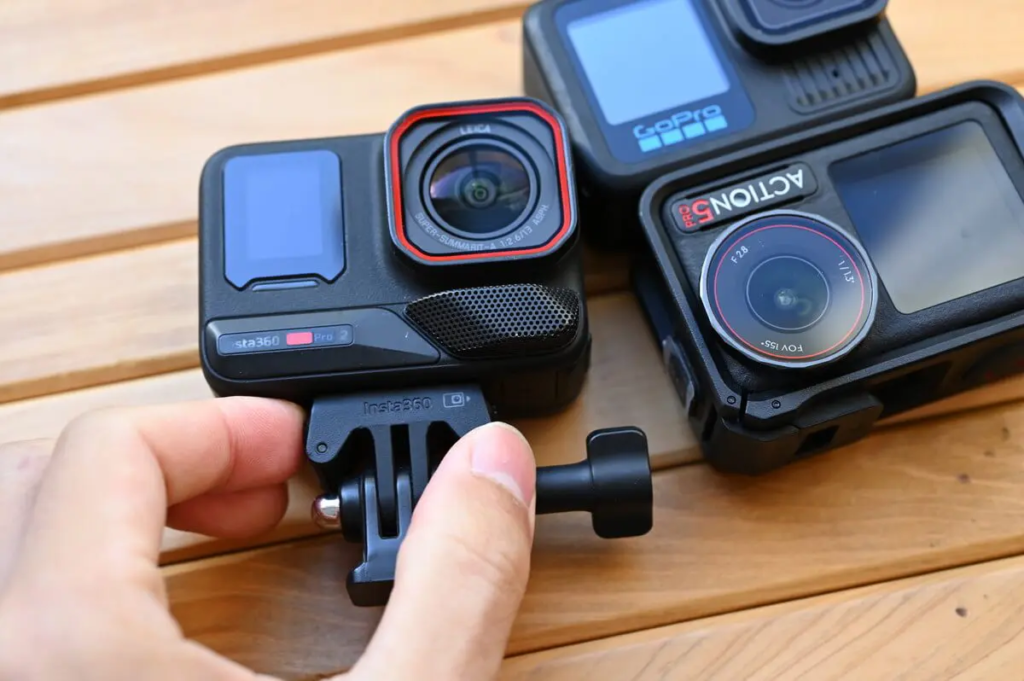
| Ace Pro 2 | HERO 13 | Osmo Action 5 Pro | |
|---|---|---|---|
| Quick Release Mount | Standard Package with Quick Release | Installation with 1/4 screws | Standard Package with Quick Release |
The Go Pro HERO 13 is sold with a quick release mount alone, while the Insta360 Ace Pro 2 and DJI Osmo Action 5 Pro both come standard with quick release mounts.
Quick Release Installation
In terms of ease of installation and removal, there's no doubt that the Ace Pro 2 is easier to mount and dismount than the Osmo Action 5 and HERO 13. Removing the Osmo Action 5 Pro's mount requires some skill, and even for me, an outdoor enthusiast and blogger, it takes considerable effort to take it off (even though I consider my grip strength to be decent…).
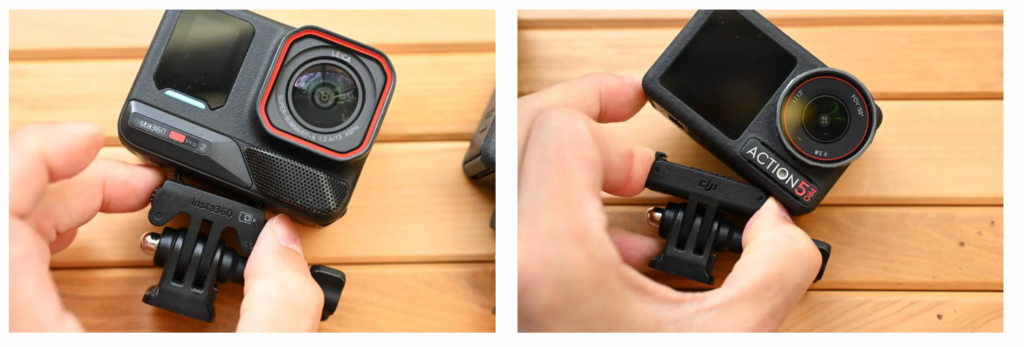
Weights
| Ace Pro 2 | HERO 13 | Osmo Action 5 Pro | |
|---|---|---|---|
| Weights | 177.2g | 154g | 146g |
In terms of camera size and weight, the DJI Osmo Action 5 Pro is the lightest. For
For users who prioritize portability, the DJI Osmo Action 5 Pro might be a popular choice. However, if you're planning to use it for cycling, travel vlogs, or light sports, I would recommend the Ace Pro 2 with its flip screen. The portability of the Osmo Action 5 Pro seems more suited for intense activities like skydiving.
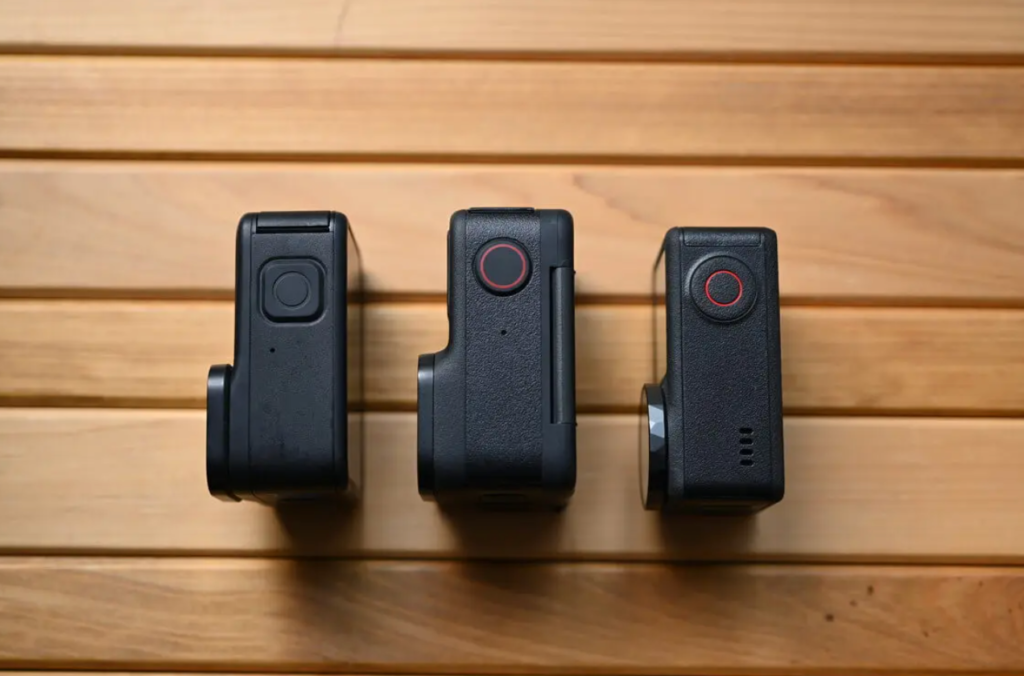
Microphone
| Ace Pro 2 | HERO 13 | Osmo Action 5 Pro | |
|---|---|---|---|
| Number of microphones | 3 | 3 | 3 |
| Wind and noise reduction |
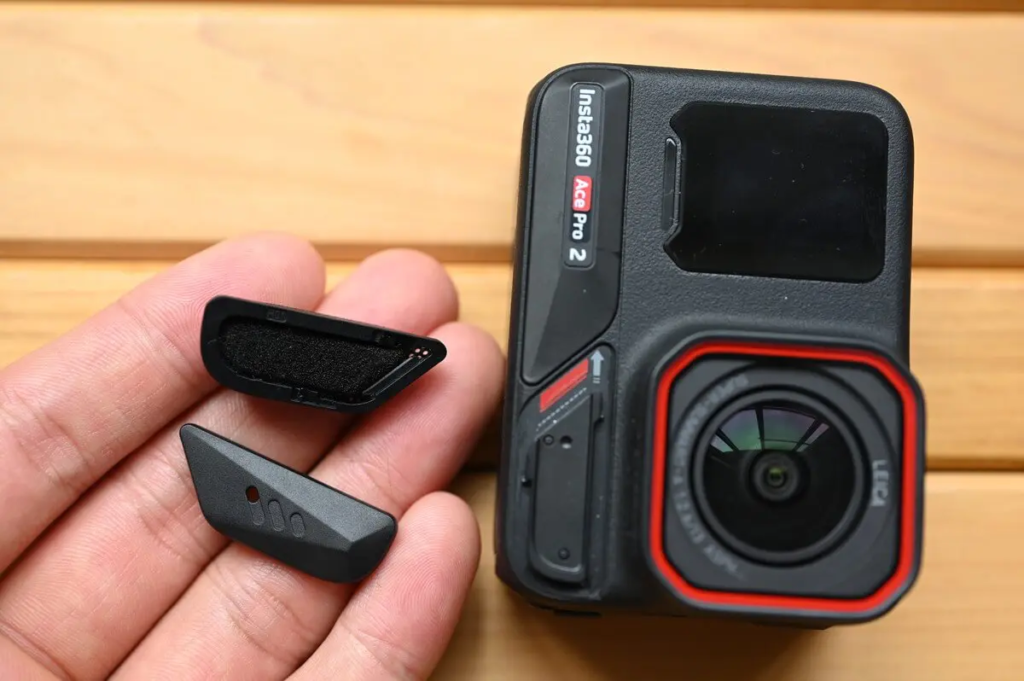
The Ace Pro 2 comes with a separate windshield in addition to a sponge cover, which is ideal for those who need to film motorcycle riding.
Battery Capacity
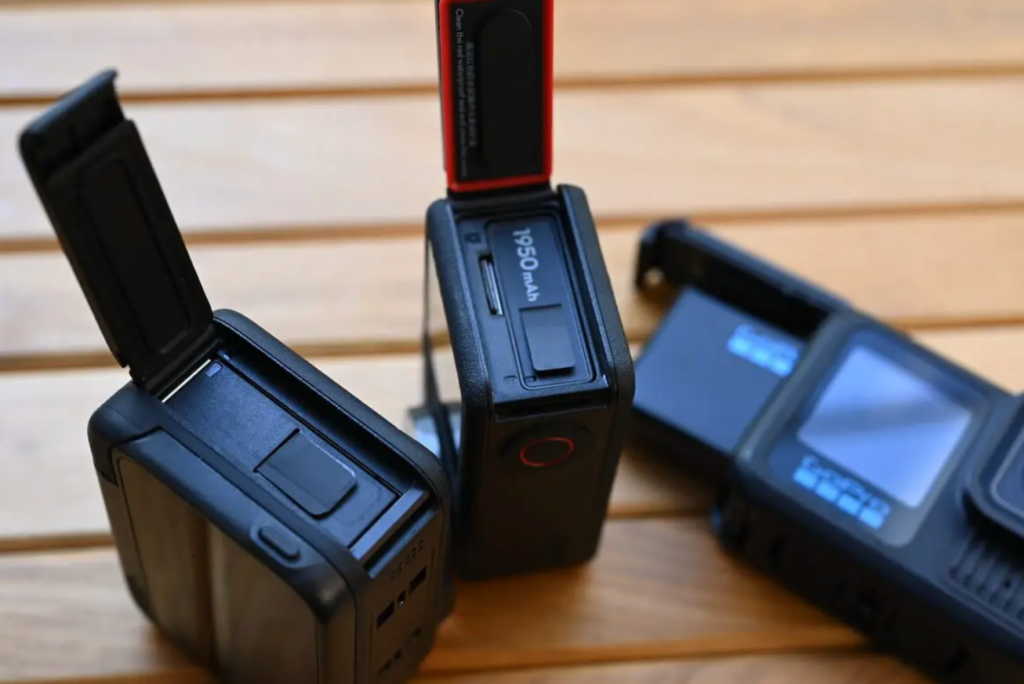
| Ace Pro 2 | HERO 13 | Osmo Action 5 Pro | |
|---|---|---|---|
| Battery Capacity | 1800mAh | 1900mAh | 1950mAh |
| Battery compatibility with previous generation models |
Battery capacity and battery life are usually key factors to consider when choosing an action camera.
The DJI Osmo Action 5 Pro features a battery capacity of up to 1950mAh. The batteries for Insta360 Ace Pro 2 and DJI Osmo Action 5 are compatible with older models, but please note that the GoPro HERO 13 cannot use the HERO 12's battery. Both the Insta360 Ace Pro 2 and DJI Osmo Action 5 Pro have increased battery capacity while maintaining compatibility with previous models.
In addition, the Ace Pro 2 is the only sports camera with a power-saving mode and Type-C to C reverse charging support, so you can use the Ace Pro 2 as a walking battery if necessary.
Support Temperature
| Ace Pro 2 | HERO 13 | Osmo Action 5 Pro | |
|---|---|---|---|
| Support Temperature | -20~45℃ | -10~35℃ | -20~45℃ |
The Insta360 Ace Pro 2 and DJI Osmo Action 5 shoot at a minimum temperature of -20°C, making them ideal for use in extremely cold winters.
Camera overheating
| Ace Pro 2 | HERO 13 | Osmo Action 5 Pro | |
|---|---|---|---|
| 4K120fps | Overheating after 1 hour and 3 minutes👍 | 23 points overheated. | Overheating after 58. |
| 4K60fps | It's not too hot. | 39 points overheated. | It's not too hot. |
Regarding overheating, the test results show that Insta360 Ace Pro 2 and DJI Osmo Action 5 Pro do not overheat easily, while the GoPro HERO 13 has obvious overheating problems.
Waterproofing
| Ace Pro 2 | HERO 13 | Osmo Action 5 Pro | |
|---|---|---|---|
| Waterproofing | 12m | 10m | 20m |
The DJI Osmo Action 5 Pro is waterproof up to 20 meters without a housing, while the Ace Pro 2 supports 12 meters. Honestly, the difference between being waterproof for 5 meters, 10 meters, and 20 meters isn't that significant. For diving scenarios, I recommend purchasing a separate diving case or a dedicated dive kit. Both the Osmo Action 5 Pro and Ace Pro 2 diving kits support up to 60 meters of waterproofing.
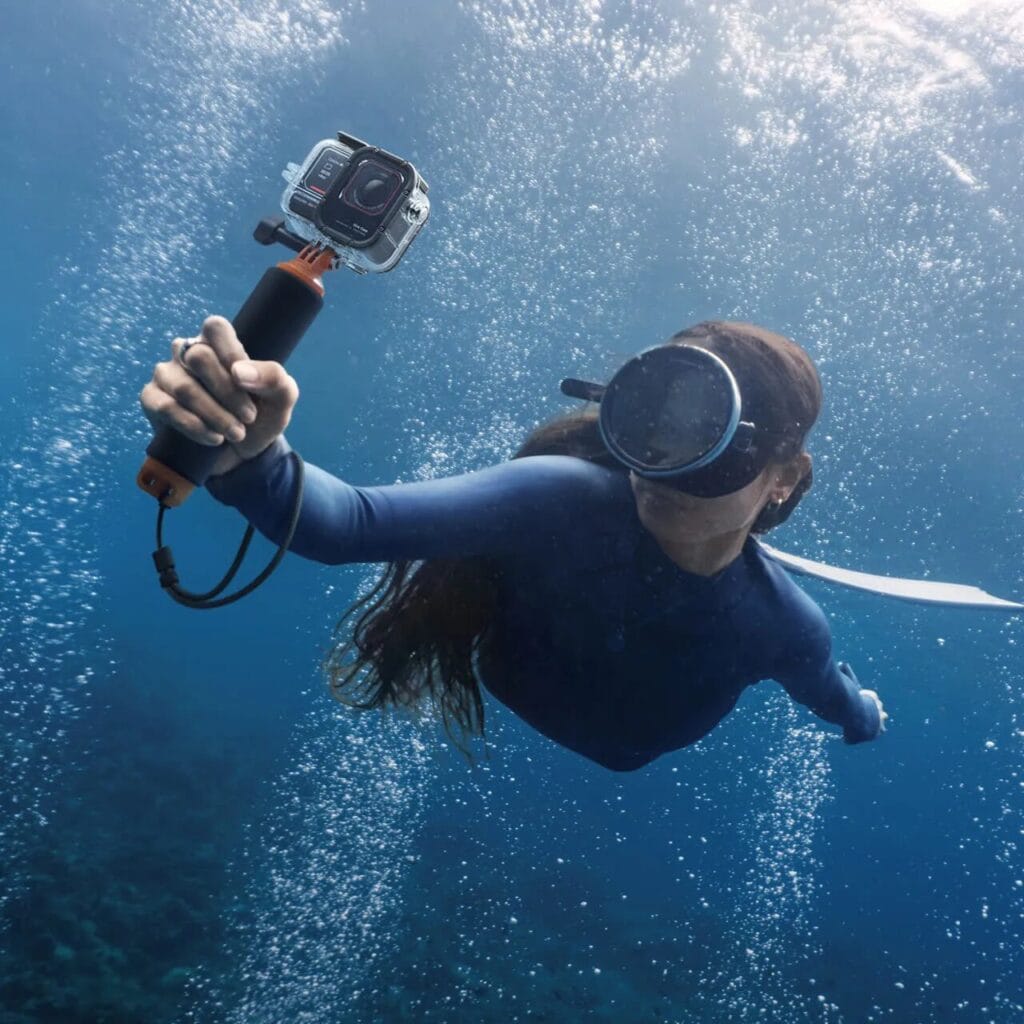
Use this link to claim your free gift
Camera Protection Frame
| Ace Pro 2 | HERO 13 | Osmo Action 5 Pro | |
|---|---|---|---|
| Camera Protection Frame | Sold individually | Sold individually | Standard |
Touch Sensitivity
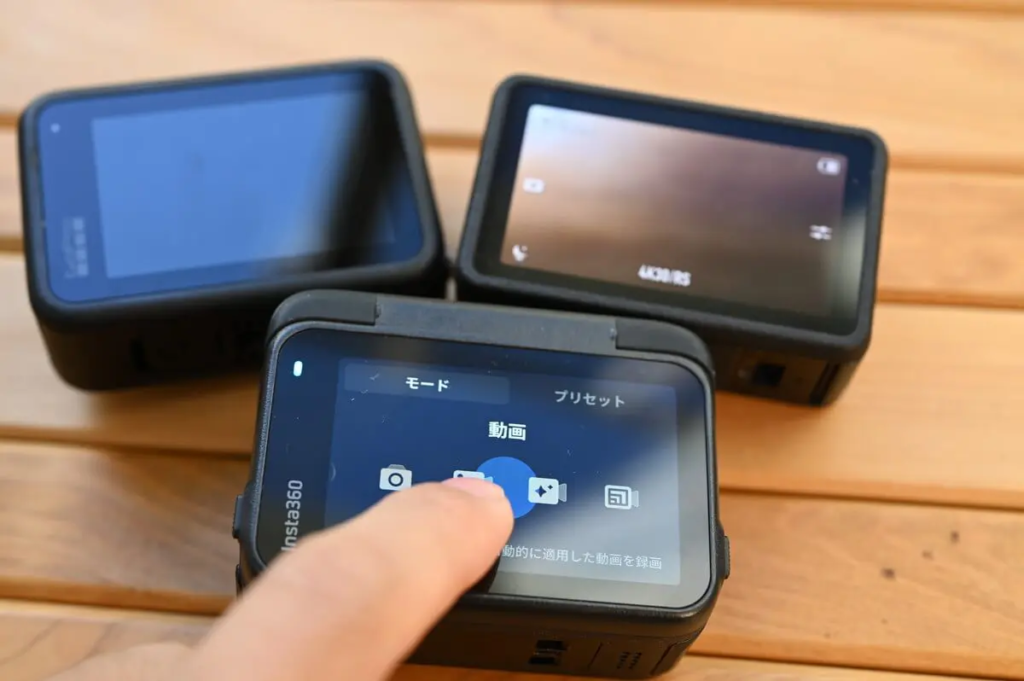
The GoPro HERO 13's touchscreen responsiveness falls noticeably behind its competitors, exhibiting a perceptible half-second delay during operation. In real-world testing, both the Insta360 Ace Pro 2 and DJI Osmo Action 5 Pro deliver significantly smoother touch experiences - their instantaneous response and fluid interface navigation rival premium smartphones, maintaining reliable performance even with wet or gloved hands. This difference becomes particularly apparent when making rapid setting adjustments during active shooting scenarios.
Response Speed
| Ace Pro 2 | HERO 13 | Osmo Action 5 Pro | |
|---|---|---|---|
| Boot-up Speed | 2.5s | 3.5s | 0.5s (7 to 10s) |
| Start Filming | Instant Auction | Instant Auction | 1-second delay |
| Stop Filming | Instant Auction | Instant Auction | 3-second delay |
The Osmo Action 5 Pro has the fastest startup speed, but after using it for a while, I found that it slows down gradually, with a maximum delay of about 10 seconds. Even though the camera starts up very fast, it takes longer to write the movie. In conclusion, the Insta360 Ace Pro 2 has the most stable response time.The
SD Memory Card
| Ace Pro 2 | HERO 13 | Osmo Action 5 Pro | |
|---|---|---|---|
| 10-minute movie capacity | 3.3GB 👍 | 11.2GB | 4.7GB |
The Insta360 Ace Pro 2 leads in storage efficiency, recording 1.5x more footage than the Osmo Action 5 Pro and over 3x more than the HERO 13 under identical conditions. This superior compression technology virtually eliminates SD card capacity concerns during extended shoots. For optimal performance, check out our dedicated Ace Pro 2 SD card buying guide.
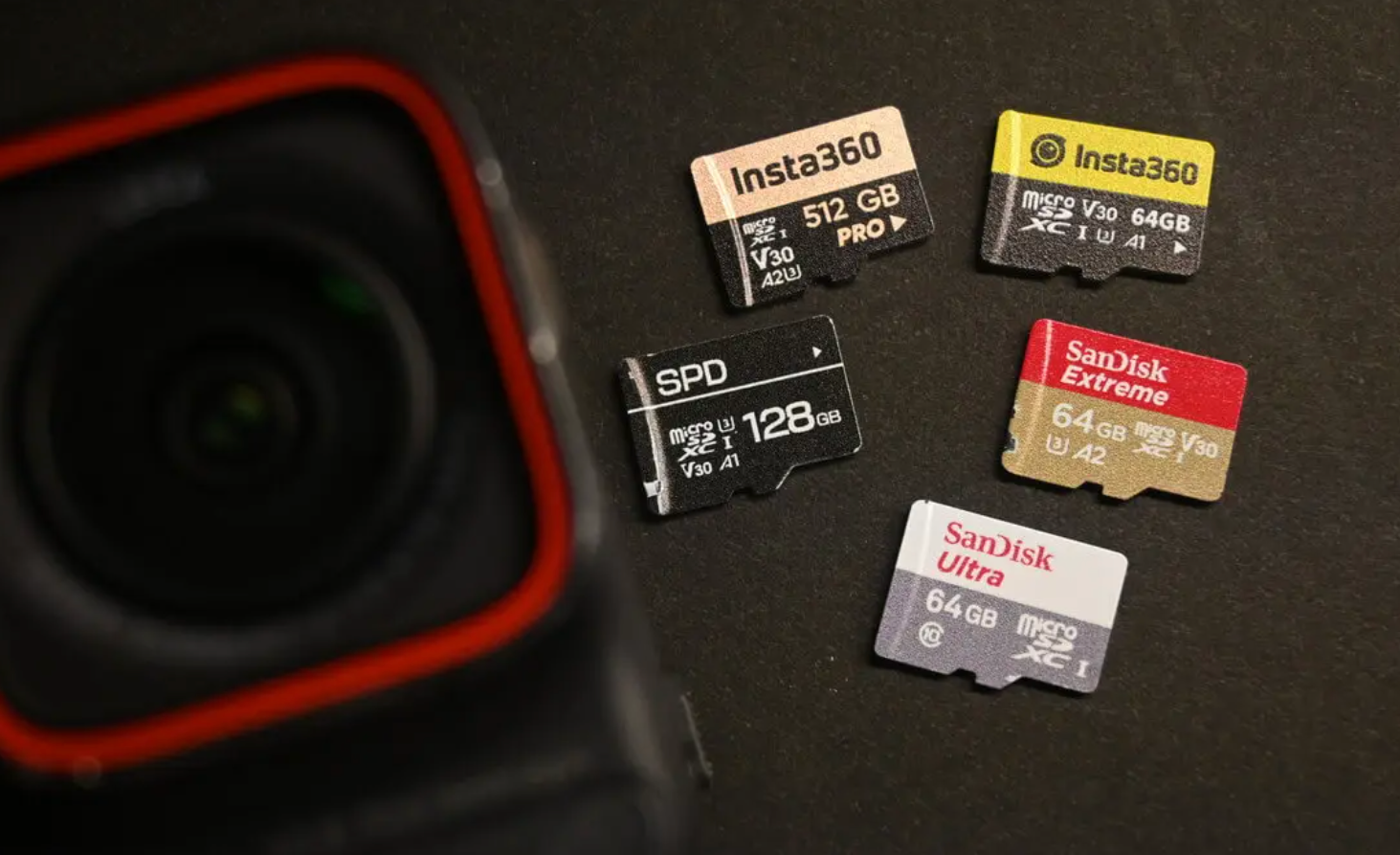
Other Functions
Macro Lens (GoPro)
DJI also offers interchangeable lenses, but only the GoPro HERO 13 supports macro lenses (sold separately). Wide-angle macro is a rare lens type, even among DSLRs. However, action cameras typically focus on mid-to-long-range shooting, making them less ideal for close-up photography.
Gesture control (Insta360)
Insta360's gesture control feature is also available on both the Ace Pro and GO 3S. The camera responds instantly to specific hand gestures, making it significantly more intuitive than voice commands in my experience. This functionality proves particularly useful for motorcycle riders, as it enables quick recording initiation even when wearing full-face helmets or masks.
Leica watermark (Insta360)
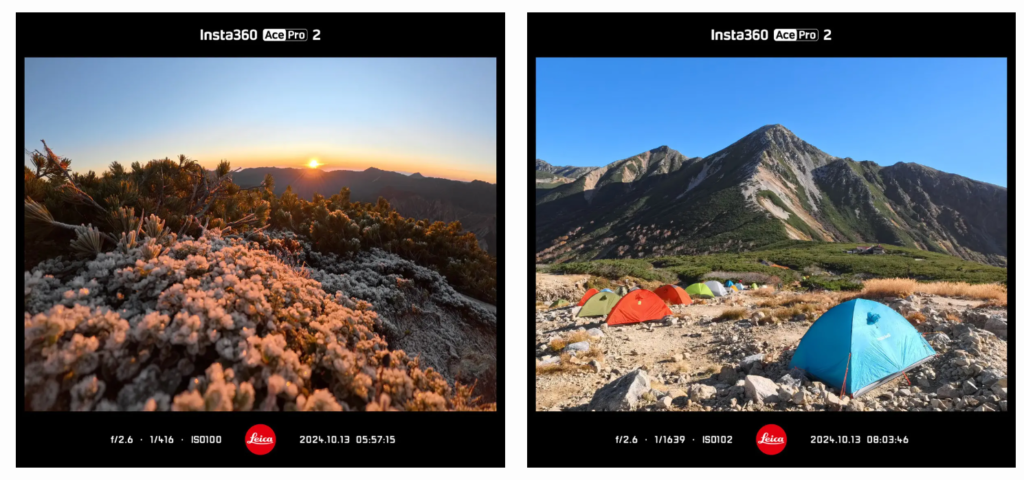
Watermarks usually contain brand logos, and since the Ace Pro 2 uses a Leica lens, the photo can also contain the Leica logo.
Green Mode
The Ace Pro 2 also has a trip recorder mode. This mode sequentially deletes old data, so if you're recording on Type-C power, you can use it in exactly the same way as a trip recorder.
Tracking function (DJI)
DJI Osmo Action 5 Pro has a tracking feature. You can crop and track the subject from the wide-angle screen and place it in the center of the frame.
Comparison of Disadvantages
After talking about the advantages of each model, I would like to briefly introduce the disadvantages of these three popular sports cameras for your reference. Whether or not you can accept these shortcomings is an important consideration when choosing a camera. After all, there is no such thing as a perfect camera, and many of the shortcomings will need to wait until the next generation of product upgrades before they can be significantly improved.Luckily, DJI, Insta360 and GoPro almost always release new models within a year to a year and a half, and are very proactive in overcoming problems and continuously improving their products. They are all considered to be conscientious manufacturers in the industry, so that users can continue to enjoy a better experience.
Insta360 Ace Pro 2 Disadvantages
The main drawbacks of the Insta360 Ace Pro 2 include:
- 8K video requires ample light and a large file size.
- The flip screen has limited utility in certain situations such as cycling and is sometimes inconvenient to operate.
- Slightly heavy body, may be a burden to carry or wear for a long time.
- Lens fogging is also a problem reflected by users, and all have been returned to the factory for repair.
- Does not support 10-bit color recording, limiting the space for post-tinting.
GoPro HERO 13 Disadvantages
The main drawbacks of the GoPro HERO 13 include:
- No significant breakthrough in resolution: videos only support up to 5.3K.
- Discounted quality in low-light environments
- New 1900mAh battery life is only slightly better than its predecessor.
- Small screen size: Rear 2.3" touchscreen doesn't look good in bright light, narrow action buttons
- Lens module needs to be purchased additionally.
- Easy to overheat when recording continuously
- Operability and Ease of Use
The GoPro HERO 13 has improved stability and some of its features, but it still leaves something to be desired in terms of image resolution and battery life performance.
DJI Osmo Action 5 Pro Disadvantages
The main drawbacks of the DJI Osmo Action 5 Pro include:
- Low-light shots show some noise and graininess, and the colors are cool.
- HDR is on by default and cannot be turned off, may cause image over-processing in bright light conditions, HDR mode cannot be enabled for 4K recording.
- In 155° super wide-angle mode, the edges of the screen are easily distorted.
- Built-in microphone has limited noise reduction capability in noisy environments, wind noise is more noticeable, an external microphone is recommended to improve sound quality.
- Harder feedback on buttons, average feel on shutter and power button.
Overall, the above restrictions may still affect the experience of some professional and high-demand users.
Ace Pro 2 vs HERO13 vs Osmo Action 5 Pro: A Guide to Choosing the Right Model
Reasons to choose GoPro HERO 13
- Macro Lens
- Horizon Leveling Feature
- Stabilizing Bracket
I think the HERO 13 is only popular with people who plan on mounting their sports camera directly to their helmet, but for anyone else it's a good idea to use the HERO 13. It really doesn't have any advantage. The
- What are the most suitable scenarios for HERO 13?
Recommended for recording with a helmet mount while riding or skiing.
Reasons to choose Ace Pro 2
- Fast and stable camera response, extremely easy to use
- Best Image Quality and Night Image Quality
- The flip screen is versatile
- SD Memory Card Storage Efficiency
- Rich and comprehensive accessories such as quick release bracket
- Other than the weight, there are few obvious drawbacks.
The Ace Pro 2 has 8K image quality and is the easiest to use of the current top 3 sports cameras. For these 2 reasons alone, I think Ace Pro 2 is already the first choice for most light sports camera users. The
- What are the best scenarios for Ace Pro 2?
Mountaineering, Traveling, Daily Vlogs, YouTube Videos, Cycling (Road Bike, Motorcycle)
Reasons to choose Osmo Action 5 Pro
- Lightest
- Cheapest Price
- Highly waterproof and protective frame
- Built-in Memory Capacity
DJI Osmo Action 5 Pro has the advantage of being the cheapest, lightest and durable enough to be used especially in extreme sports scenes. However, in terms of video quality, I personally find the Osmo Action 5 Pro to be mediocre, but it's the best choice for those who care about extreme sports video.
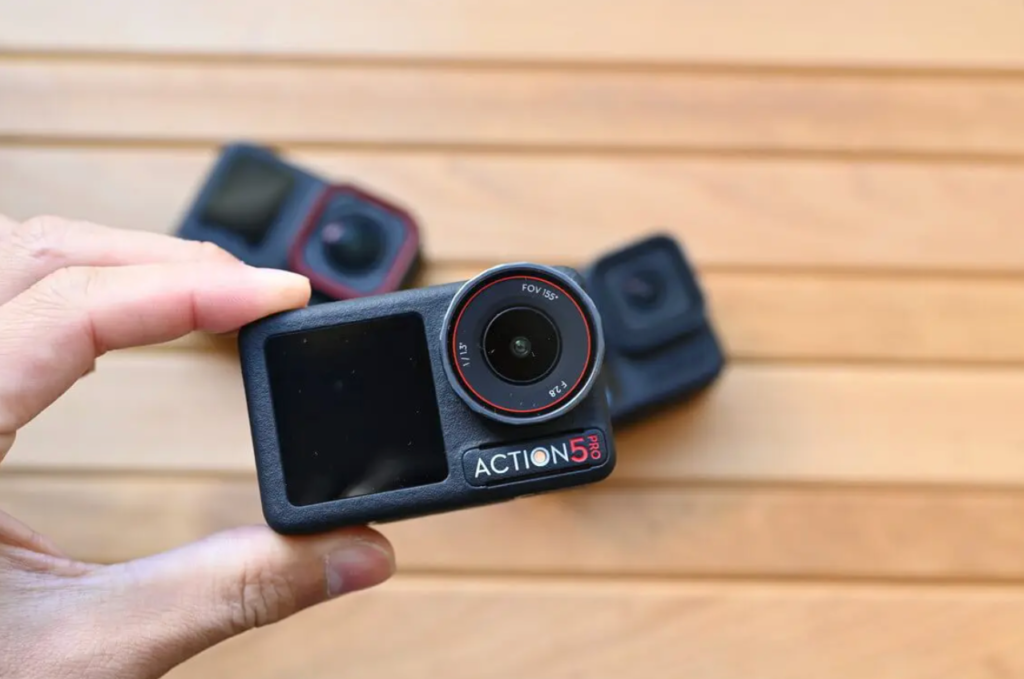
- DJI Osmo Action 5 Pro What are the best scenarios to use it in?
Mountain Biking, Rock Climbing, Parkour, Diving, Kayaking Slalom, Skydiving
Conclusion
This concludes our head-to-head comparison of the latest action cameras from the big three manufacturers—GoPro, Insta360, and DJI. We hope this review has provided clarity on which model best suits your needs, helping you make an informed decision on your next action camera.
As sports cameras are usually updated once a year.It is expected that after December 2025, these brands will launch newer flagship models. We'll continue to post reviews of new GoPro HERO 14, Osmo Action 6, and Ace Pro 3 (specific name not yet confirmed) as they become available.We will continue to provide you with valuable information to help you choose the best sports camera and capture every beautiful moment.
